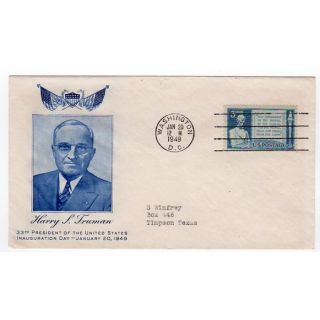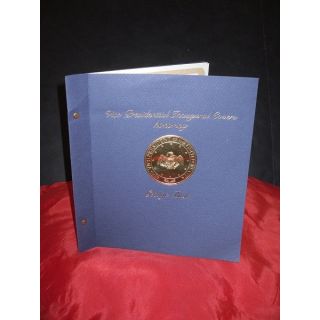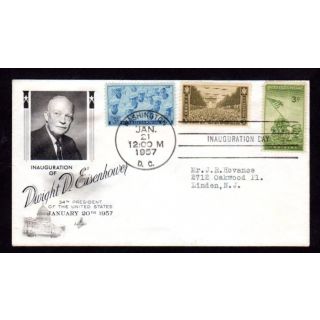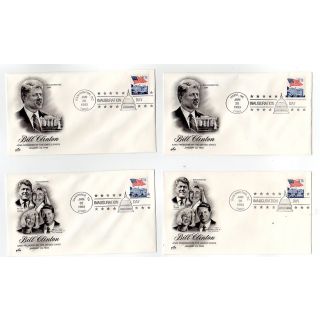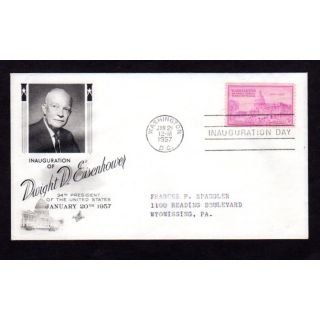Collecting Inaugural Covers
By Lori Ferber
Collecting souvenirs from the inauguration of presidents of the United States has been a pastime of collectors since the first inauguration of George Washington. Citizens attending inaugurations almost always return with momentos from America’s most lavish celebration.
Inauguration covers are essentially envelopes postmarked on the actual date of presidential inaugurations. One of the reasons for the popularity is no doubt that they are of interest to many different collectors. Philatelists (stamp collectors) collect them for the stamps attached to the envelopes, postal history enthusiasts are intrigued by the postmarks, political memorabilia collectors enjoy the references to history and presidents and people who have an affinity towards a particular president (pro or con) include it in their collections of a particular U.S. president.
In modern times, let’s call that 1957 and later, inaugural covers generally include an attractive graphic or photo on the left side of the envelope (called a cachet), a postage stamp that may or may not relate to the inaugural event (such as a U.S. Flag or White House postage stamp) a postmark which typically includes the words “inauguration day” or “Presidential inauguration all included on an envelope (usually called a “cover”.
The first commonly available U.S. inaugural cover is believed to have been produced for the inaugural of Herbert Hoover in 1929. While the cachets were certainly not ornate by today’s standards, they were specifically produced for the occasion and often contain a cachet which was produced by a rubber stamp and postmarked in either Washington, D.C. or Boundbrook New Jersey.
The so called “modern age” of inaugural covers began in 1933 with covers produced to commemorate the first term of Franklin Delano Roosevelt. This was enhanced by the fact that Roosevelt was a well known stamp collector and a host of cachets were produced for this event. This term was also notable in that it was the last time an inauguration was held on a March 4th date. After that year inaugurations have been held on January 20th unless, as it did in 1957, the 20th fell on a Sunday.
During Roosevelt’s four terms in office literally dozens of different cachets were produced for each inauguration. The second term (1937) and third term (1941) are particularly prized by collectors as fewer covers were produced for these inaugurals. During this time period the type of depth and breadth designs and styles of inaugural covers began to grow. Creativity took hold as cachet makers experimented with different sized envelopes, combinations of postage stamps, postmarks from various cities linked to Roosevelt. For instance, one enterprising cachet maker actually created a series of covers postmarked in Franklin, Delano and Roosevelt Minnesota.
The line between covers commemorating inaugurations and those commemorating the death of a President became blurred in 1945 when Roosevelt died April 12, 1945 and Truman was inaugurated President. Cachet makers produced many different covers that commemorated both events on the same date.
Cachets are generally divided into two categories; those produced by the large commercial cachet makers such as Artcraft, Artmaster and Fleetwood and those produced by individuals or smaller cachet makers. Collectors are often divided on which type is most collectible with proponent of the commercial cachet makers believing those covers to be more authentic and collectors of handmade and limited issue covers are more valuable based on their scarcity.
In the end, the type of cachet, whether the envelope is unaddressed or addressed, or what city the cover was postmarked in, is truly a matter of personal choice and one of those things that makes each collection unique.
Lori Ferber has been selling and collecting inauguration covers and political memorabilia for over 30 years. You can visit her website at www.loriferber.com.

